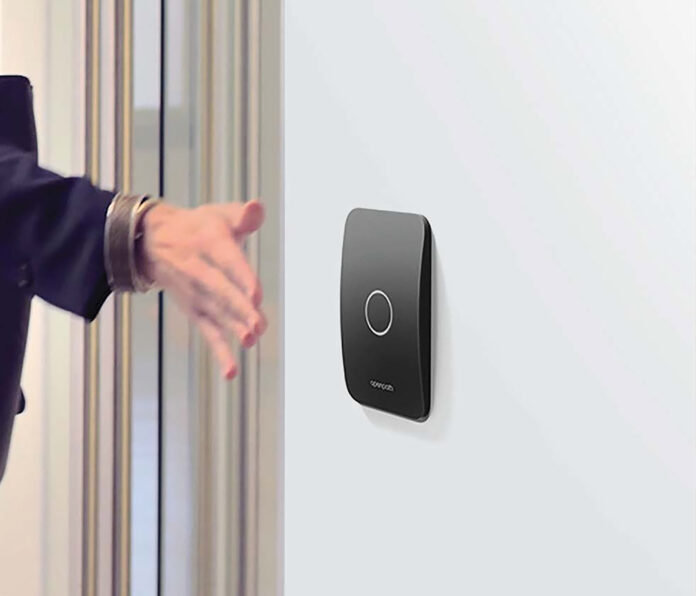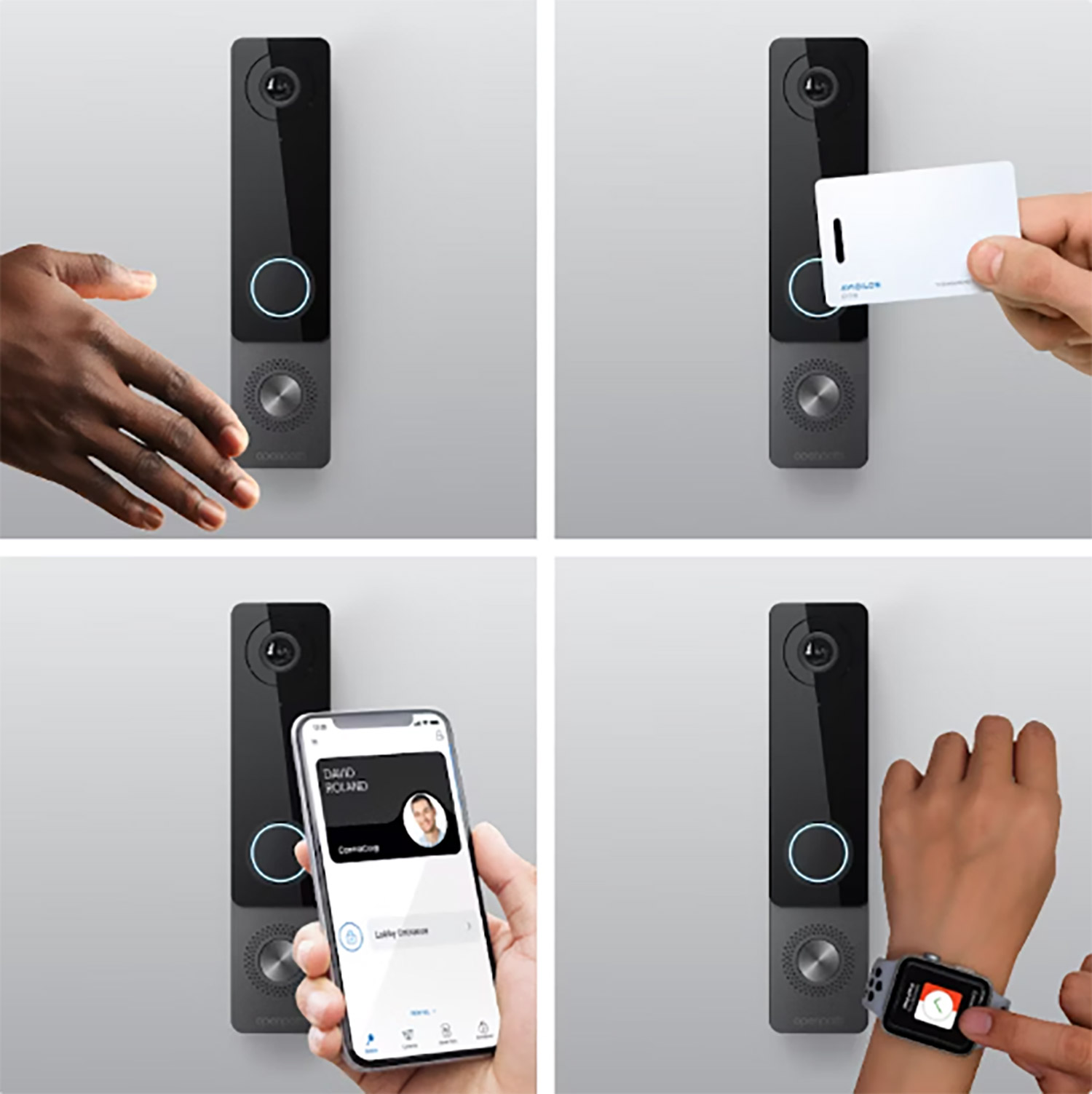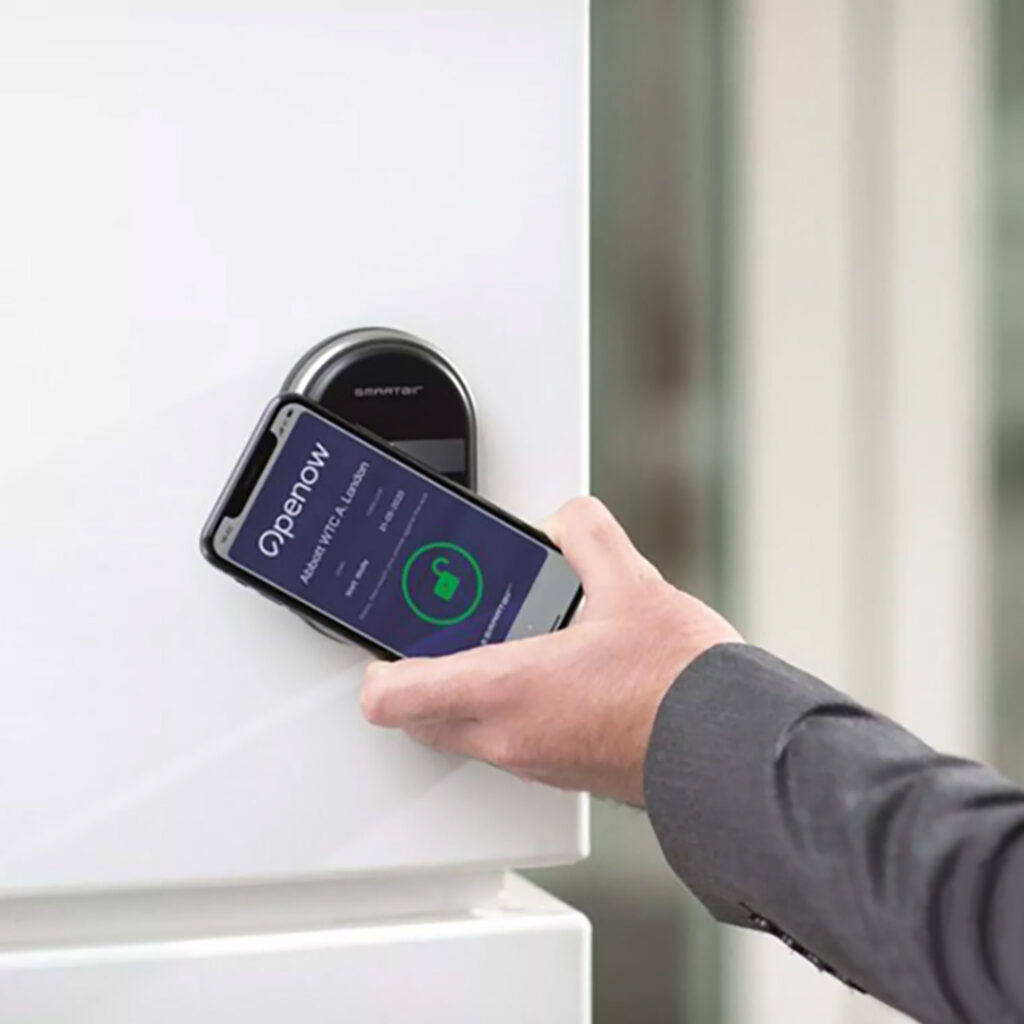Smart access control systems are revolutionizing building security by integrating advanced technologies for enhanced protection and efficiency. Facade Today explores how these innovations are shaping the future of secure building environments. Key components include electric locks, card readers, and biometric authentication, supported by RFID, NFC, and Bluetooth. Integration with building management systems allows comprehensive control of security and energy usage, while mobile credentials enable smartphones to act as secure keys. Future trends include IoT integration, adaptive security measures, and AI-driven predictive capabilities. These advancements are creating interconnected, intelligent facades that can anticipate and respond to potential threats, offering unprecedented levels of security and efficiency in modern buildings.
Mobile Keys and Biometric Locks
The New Face of Access Control
The history of access control has evolved dramatically from ancient mechanical locks to today’s sophisticated smart systems. Today, smart access control systems represent the cutting edge of building security. These systems integrate advanced technologies to provide enhanced protection, efficiency, and user experience.
Key components of modern access control systems include electric locks, card readers, and access control keypads. These are supported by communication technologies such as RFID, NFC, and Bluetooth, which enable seamless interaction between users and access points.
Integration with building management systems allows for comprehensive control and monitoring of security, energy usage, and occupant comfort. This integration creates a cohesive ecosystem that enhances overall building performance and security.
Biometric authentication has become increasingly prevalent in facade design, utilizing unique physical characteristics like fingerprints, facial features, or iris patterns for access control. This technology offers a high level of security and convenience, eliminating the need for physical credentials. Mobile credentials and NFC technology are revolutionizing access control by allowing smartphones to act as secure keys. This approach provides flexibility and ease of use for occupants while maintaining robust security protocols.
Powering Security with Efficiency
Integrating Access Control with Smart Systems
Energy Efficiency and Sustainability in Access Control
Power-efficient access control devices have become a cornerstone of sustainable building design. Modern wireless locks, such as those in ASSA ABLOY’s SMARTair system 1, consume significantly less energy than traditional wired locks. These battery-powered devices only activate when presented with credentials, resulting in energy savings of up to 70% over their lifetime. Additionally, high-power PoE (Power over Ethernet) systems offer enhanced efficiency, allowing multiple locks to be powered by a single source and reducing the need for additional power supplies.
Integration with smart lighting and HVAC systems further amplifies energy savings. AI-powered access control systems can analyze occupancy patterns and adjust environmental controls accordingly. For example, when an area is accessed, the system can automatically activate lighting and adjust temperature settings, optimizing energy usage and comfort.
Connectivity and Performance
Cloud-based management and real-time monitoring have revolutionized access control systems. These platforms enable security professionals to manage and monitor access points remotely, providing instant updates and alerts. Advanced multiport injectors offer remote management options, allowing administrators to determine power consumption for each port from virtually anywhere.
For example Avigilon Alta’s cloud-based mobile credentials 2 enable a 100% touchless entry experience. Users can simply wave their hand in front of the reader while their phone is on them to unlock the door—no physical contact required. By combining Bluetooth recognition with motion detection, this Wave-to-Unlock technology authenticates credentials in real-time, ensuring a smooth entry process.
AI-driven predictive security measures are enhancing system performance and safety. By analyzing historical data and current trends, AI can predict potential security risks before they occur, enabling proactive measures. These systems can identify unusual behaviors and potential threats with greater accuracy than human operators, allowing for immediate action to prevent security breaches.
As of 2025, these advancements in energy efficiency, connectivity, and touchless access are transforming building security, offering both enhanced protection and significant operational cost savings.
(1) https://www.assaabloy.com/uk/en/solutions/topics/access-control
(2) https://www.avigilon.com/access-control/cloud
Balancing Form and Function
Integrating Access Control into Facade Aesthetics
The evolution of access control systems has led to significant advancements in material selection and design, addressing both durability and aesthetics. Modern reader designs now incorporate high-strength polymers and alloys that resist weathering, vandalism, and wear while maintaining a sleek appearance. For instance, some manufacturers are using nano-ceramic coatings that provide exceptional scratch resistance and allow for a wide range of color options to match facade designs.
Integration of access control elements into facade materials has become a key focus for innovative manufacturers. New developments include conductive materials embedded directly into glass panels, allowing for touch-sensitive access points without visible hardware. Another breakthrough is the use of transparent OLEDs integrated into facade glazing, enabling dynamic display of access information while maintaining the visual continuity of the building envelope.
Designing for User Experience and Aesthetics
Seamless integration of access control into facade aesthetics is crucial for maintaining architectural integrity. Facade engineers and architects are now collaborating closely with security specialists to design systems that blend invisibly with building exteriors. For example, some designs incorporate access readers into decorative facade elements, such as textured panels or artistic installations, making them virtually indistinguishable from the surrounding materials.
Balancing security with architectural vision requires a nuanced approach. Advanced 3D modeling and virtual reality tools allow designers to visualize how access control elements will appear in the context of the entire facade before implementation. This enables fine-tuning of placement, size, and finish to ensure that security features enhance rather than detract from the building’s aesthetic appeal.
Moreover, the user experience is being prioritized through intuitive designs that guide individuals naturally towards entry points. Subtle LED lighting integrated into facade elements can provide wayfinding cues, while proximity sensors can trigger welcoming animations or information displays as users approach.
Future-Proofing Facades
IoT and AI-Driven Security Solutions
Future Trends in Smart Access Control for Facades
IoT integration and smart building ecosystems are revolutionizing access control systems. Facades are becoming interconnected hubs, seamlessly integrating with other building systems to create a holistic security approach. This integration allows for real-time monitoring, automated responses, and enhanced energy efficiency.
Adaptive security measures based on environmental factors are emerging as a key trend. Smart facades can now adjust their security protocols in response to climate conditions, occupancy levels, and potential threats. This includes automated adjustments to access points during extreme weather events or heightened security measures during high-risk periods.
AI is transforming building security systems by introducing predictive capabilities and intelligent analysis. AI-powered access control can now anticipate potential security breaches, analyze behavioral patterns, and make real-time decisions to enhance building safety. These systems can identify unusual activities, automate responses to threats, and provide a level of surveillance that surpasses human capabilities.
As we approach 2026, we can expect to see more sophisticated biometric authentication methods, increased use of mobile credentials, and further integration of AI and machine learning in facade access control systems, creating smarter, more secure, and more efficient buildings.
= = = =
Useful links: https://www.irbnet.de/daten/iconda/CIB7392.pdf
As the Editor of FacadeToday.com, I merge my passion for Design, Architecture and Technologies with three decade of experience collaborating with entrepreneurs across many industries. My career has centered on fostering innovation, scaling business opportunities, and bridging gaps between technical experts, business developers, and creative visionaries. I thrive at the intersection of sustainable solutions, material advancements, and smart technologies, curating insights on themes like energy-efficient facades, smart tech, and advanced manufacturing. With a commitment to lifelong learning, I aim to empower architects and facade engineers by translating innovations into actionable knowledge, driving the industry forward through purposeful connectivity and cutting-edge practices.





